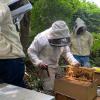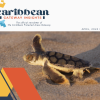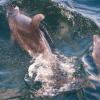Tropical Forest and Wetland Losses and the Role of Protected Areas in Northwestern Belize, Revealed from Landsat and Machine Learning
Changes in land-use and land-cover, including both agricultural expansion and the establishment of protected areas, have altered the landscape pattern and extent of forest and wetland cover in the tropics. In Central America, land-use and land-cover change is also threatening the cultural resources of the region’s ancient Maya heritage since many ancient sites have been degraded by burning, deforestation, and plowing. In this study of Orange Walk District of northern Belize, from the 1980s to the present, we used multitemporal Landsat data with a random forest classifier to reveal trends in land-use and land-cover change and the increasing loss of forest and wetlands. We develop a random forest classifier that is time-generalized to map land-use and land-cover across the entire Landsat record, including Landsat 4, 5, 7, and 8, with a single algorithm. Including multiyear and seasonal composites was important for obtaining cloud-free coverage and distinguishing between different land-use and land-cover types. Early deforestation (1984–1987) was in small patches scattered across the landscape and likely driven by small scale agriculture such as milpa and smaller area tractor and horse-drawn plowing. The establishment of protected areas in the late 1980s and early 1990s allowed for forest regrowth in these areas, while wetland losses were high at 15%. The transition to industrial agriculture in the 2000s, however, drove a 43.6% expansion of agriculture and a 7.5% loss of forest and a 28.2% loss of wetlands during the ~15 years. Protected areas initiated in the 1980s led to a nearly 100 km2 decrease in agriculture from 1984–1987 to 1999–2001, and they became essential refugia for habitat and maintaining ecosystem services.
Area of Interest: Belize
Year: 2021




